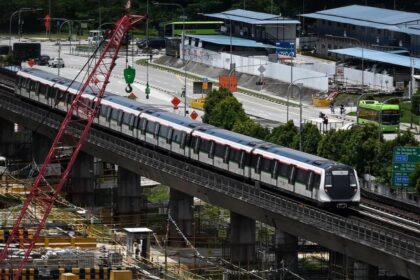A tipping point for Singapore and the region
Singapore crossed a demographic threshold in 2025. For the first time, more than one in five citizens are 65 or older. Official figures indicate that citizens aged 65 and above accounted for about 20.7 percent of the population in June 2025, up from 13.1 percent in 2015. With this shift, Singapore becomes the first country in Southeast Asia to reach this level of ageing. The milestone captures decades of social change and sets the stage for a new phase of policy and community action.
- A tipping point for Singapore and the region
- How Singapore grew older so quickly
- The shifting shape of the population
- Pressure points for the economy and services
- What the government is doing
- Cities, homes and transport built for aging in place
- Mindsets and social cohesion
- What businesses and workers can do now
- What to watch in the next five years
- The Bottom Line
This share will rise further. Singapore is expected to be classified as a super aged society in 2026, a designation used when at least 21 percent of the population is 65 and older. By 2030, about one in four citizens will be 65 or above. The oldest segment is growing the fastest. Citizens aged 80 and above reached around 145,000 in June 2025, a jump of about 60 percent from 2015. They now form roughly 4 percent of citizens, and about six in ten of them are women.
Behind the headline figure sits a familiar demographic story. Families are smaller and people live longer. Government planners are retooling healthcare, housing, transport and retirement systems to help people age in place. Companies face a tight labor market and must adapt work to a more senior workforce. Families balance caregiving with careers. Neighborhoods are being redesigned to support active ageing and reduce loneliness. The change touches almost every aspect of daily life.
How Singapore grew older so quickly
Two powerful forces drive the shift. The total fertility rate has fallen for many years, while life expectancy remains among the highest in the world. The total fertility rate dropped below 1 for the first time in 2023 and stayed at an estimated 0.97 in 2024. That level is far below the replacement rate of 2.1. Life expectancy at birth remains around 83 years, reflecting advances in healthcare, public health and living standards.
Low fertility and later marriages
Young adults marry later and have fewer children. Financial pressures, housing costs, and childcare concerns weigh on decisions about family size. Many parents also weigh career progression and lifestyle trade offs more heavily than previous generations. Efforts to support marriage and parenthood have expanded over time. Measures include more parental leave, higher childcare subsidies, flexible work arrangements and direct support such as the Large Families Scheme for the third and subsequent citizen child. Some years in the lunar cycle traditionally bring hopes of a baby bump. Yet the Dragon Year in 2024 did not lift births in the way seen in earlier decades, a sign that cultural preferences now play a smaller role than practical considerations.
Longer lives and better health
Singapore’s long lifespan reflects strong disease control, access to care and healthier habits over the decades. More people are living into their 80s and 90s. That is a success story, but it also raises demand for long term care, community support and age friendly design. Healthier SG, a national push for preventive care, encourages residents to stay linked to a family doctor, improve diet and activity, and manage chronic conditions more consistently. Over time, better prevention can slow disease progression, reduce disability and help seniors remain independent for longer.
The shifting shape of the population
The senior share is rising across all age bands, with the most rapid growth among those 80 and older. Women form the majority of this oldest group, which affects care patterns because women are more likely to live longer and alone in late life. This tilt means more demand for community day care, home care, rehabilitation and dementia support, plus housing options that are closer to services and transit.
At the same time, the working age share is shrinking. The proportion of citizens aged 20 to 64 fell from about 64.5 percent in 2015 to 59.8 percent in June 2025. That trend reduces the old age support ratio, which is the number of working age people available to support each senior through taxes, caregiving and contributions to social systems. The labor force remains large in absolute terms, with roughly 3.94 million workers in mid 2023 when counting residents and non residents, but growth is slower and competition for skills is intense.
Median age is rising steadily. It rose from about 40.7 in 2015 to roughly 43.7 in June 2025. Projections for future decades point higher still. Several international estimates suggest the median age could exceed 50 by mid century if fertility stays low and longevity remains high. An older median age can change consumption patterns, housing demand, and the mix of services that households seek.
Pressure points for the economy and services
Ageing reshapes budgets, jobs and demand for care. Tax revenue growth can slow when labor force expansion tapers, while spending pressures rise in healthcare and social support. Sectors that care for seniors will grow faster, from home care and community health teams to rehabilitation, orthopedics, diagnostics and the equipment supply chain. Training more allied health professionals and building up community based services will be as important as expanding hospital capacity.
Health costs on the rise
Recent projections by public health researchers using a dynamic microsimulation model for older adults (2020 to 2050) suggest chronic diseases, multimorbidity and disability will grow in prevalence as the population ages. The model, aligned with preventive goals under Healthier SG, simulated lifestyle and clinical interventions such as improved blood pressure control, more physical activity and reduced sodium intake. The findings indicate that targeted prevention can bend the cost curve, with combined interventions yielding estimated healthcare savings of about 505 million US dollars by 2050. The study also reported differences across ethnic groups in disease burden and lifetime costs. The results point to the need for culturally tailored prevention and management programs that reach people early and sustain engagement over many years.
Work and retirement are changing
Keeping older adults in the workforce is central to economic resilience. Retirement and re employment ages are being raised in stages to 65 and 70 by 2030. More seniors want to work longer, and many can do so with the right roles and support. Employment rates among those in their early and late sixties are high by global standards, helped by flexible arrangements and job redesign. Funding schemes also encourage employers to move early on higher internal retirement and re employment ages and to adopt age inclusive practices. Reducing the physical demands of work through better tools and digital support, expanding part time roles, and investing in on the job training help seniors stay productive and pass on know how to younger colleagues.
What the government is doing
Singapore has been planning for ageing for years. A Ministerial Committee on Ageing was formed in 2007 to align efforts across agencies. The first Action Plan for Successful Ageing was launched in 2015 and refreshed in 2023 to reflect a greater diversity of senior needs and aspirations. The approach is broad, covering health, employment, retirement adequacy, learning, social participation and the built environment. It also relies on partnerships across people, private and public sectors.
Age Well SG and community support
Age Well SG focuses on helping seniors stay active, connected and independent in their own neighborhoods. It expands active ageing centres, strengthens social networks, and supports caregivers through respite and community programs. A flagship idea is the Age Well Neighbourhood, which weaves together safer paths, benches and rest points, social activities, nearby services and digital tools that make daily life easier. The first such neighborhood is slated for Toa Payoh, a mature town that already has a high share of seniors.
Healthcare shift to prevention
Healthier SG aims to move care upstream. The program encourages every resident to anchor with a family doctor, adopt a personalized health plan, and keep up regular screenings. The goal is to reduce disease progression and prevent complications that drive hospital use and costs. Outreach efforts, community partners and digital platforms are being used to support participation and track progress. For more on the refreshed action plan, see the Ministry of Health overview at this official page.
Retirement, CPF and income security
The Central Provident Fund system has been updated in stages to reflect longer lives. CPF LIFE provides lifelong payouts in retirement. Workfare supports lower wage workers during their working years, while Silver Support provides cash payouts to seniors who had low or no incomes in their working lives. Contribution rates and salary ceilings have been raised in steps for older workers to strengthen retirement adequacy. Prime Minister Lee Hsien Loong has framed the task plainly.
Speaking at a book launch on ageing, Prime Minister Lee highlighted how deeply the shift will reshape society before setting out the case for sustained policy changes.
An ageing population will totally change the way our society works. From our economy, to our healthcare system, to planning for retirement adequacy.
Funding these ambitions requires significant resources. Recent budgets have provided for more hospital and community care capacity, along with higher spending on preventive care and social support. The goods and services tax was raised to help fund rising healthcare and social needs linked to ageing. Policymakers have also emphasized the role of partnerships with community groups and employers to turn plans into daily practice.
Cities, homes and transport built for aging in place
The built environment has been steadily upgraded to support safe, active ageing. Most public housing blocks now have lifts that stop on every floor. Barrier free paths, curb cuts and ramps make it easier to move around. Senior friendly exercise stations are common in parks and neighborhood fitness corners. Newer homes and upgrading programs emphasize grab bars, anti slip surfaces and wider doorways. Community clubs, polyclinics and active ageing centres are planned within easy reach, reducing the need for long trips across town. Transport planning continues to add priority seating, clearer signage and better lighting to make journeys easier for people with mobility or vision challenges.
Housing policy complements healthcare planning. Community care apartments combine compact, affordable flats with on site services and social spaces. They are designed for seniors who are generally well but want care and community close by. Future township designs are expected to include more rest points, shade, and mixed use amenities so that shopping, medical and social activities are within a short walk.
Mindsets and social cohesion
Infrastructure alone will not define how well the country ages. Attitudes matter. Many older adults are healthy and ready to continue contributing, while others face frailty, chronic disease or isolation. A narrow focus on the most active seniors can leave people who are less fit feeling excluded. A broader view of contribution helps. Volunteering, caregiving, mentoring and staying socially engaged all add value to families and communities. Public education campaigns seek to counter ageist stereotypes and encourage intergenerational respect.
Caregiving is also changing. Smaller families and longer lifespans mean fewer adult children to share care for each older parent. That increases the need for respite options, caregiver training and flexible work arrangements. Programs that connect seniors to one another, including peer support and volunteer networks, can ease loneliness and spread the load of care across the community.
What businesses and workers can do now
Employers that plan early tend to see better results. Practical steps include redesigning roles to reduce heavy lifting and repetitive strain, offering flexible or shorter shifts, and pairing experienced seniors with younger staff in mentoring and quality roles. Training is crucial. Bite sized, on the job learning helps seniors absorb new processes and tools. Digital aids such as tablets with simple interfaces, speech to text, and guided workflows can raise productivity and make tasks less tiring. These steps broaden the talent pool and retain valuable experience.
Workers can prepare too. Keeping skills current, staying active, and maintaining strong social networks boost employability and wellbeing. Seniors who switch to part time or project based work often report higher satisfaction when they can share expertise without long hours. The shift to a more senior workforce is an opportunity to improve job quality for all ages by emphasizing health, safety, flexibility and lifelong learning.
What to watch in the next five years
Several markers will show how well Singapore is adapting. The share of citizens aged 65 and above will pass 21 percent in 2026, confirming super aged status. Retirement and re employment ages will rise again by 2030, testing how workplaces adapt to an older core of staff. Participation in Healthier SG and community programs will indicate whether prevention is reaching enough people to slow disease and disability. The growth of the 80 and above group will shape demand for home care, dementia services and end of life care, and will influence how estates are upgraded. Fertility will remain a closely watched indicator given its long run influence on population structure. Immigration policy will continue to balance economic needs and social cohesion as the resident workforce grows more slowly. How quickly employers redesign jobs and invest in training will affect productivity growth and job satisfaction across age groups.
The Bottom Line
- Citizens aged 65 and above reached about 20.7 percent of the population in June 2025, making Singapore the first Southeast Asian country to cross the one in five threshold.
- Singapore is expected to become a super aged society in 2026 when the 65 and above share exceeds 21 percent.
- The oldest group, 80 and above, rose about 60 percent in a decade to roughly 145,000 and now forms about 4 percent of citizens. About six in ten in this group are women.
- Fertility remains very low, with an estimated total fertility rate of 0.97 in 2024, while life expectancy at birth is around 83 years.
- The working age share fell from about 64.5 percent in 2015 to 59.8 percent in June 2025, tightening the old age support ratio.
- Median age rose from about 40.7 in 2015 to around 43.7 in June 2025 and is projected to climb further in the coming decades.
- Public health projections point to rising chronic disease and disability, but targeted prevention could save hundreds of millions of US dollars by 2050 and improve health outcomes.
- Policy responses include Healthier SG, the refreshed Action Plan for Successful Ageing, and Age Well SG, along with upgrades to housing, transport and community facilities.
- Retirement and re employment ages are rising in stages to 65 and 70 by 2030. CPF LIFE, Workfare and Silver Support bolster retirement adequacy and support lower income seniors.
- Employers can tap a larger senior workforce by redesigning jobs, offering flexible arrangements and investing in training and digital tools.
- Key indicators to watch include the pace of ageing, participation in preventive care, growth of home and community care, and sustained efforts to support families and caregivers.
- The demographic shift is durable. With early planning and steady execution, Singapore can turn longer lives into healthier, more connected years for its seniors.












